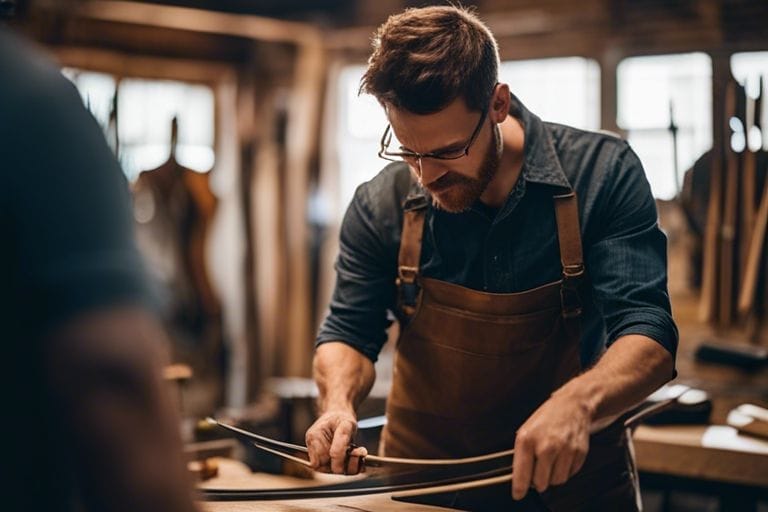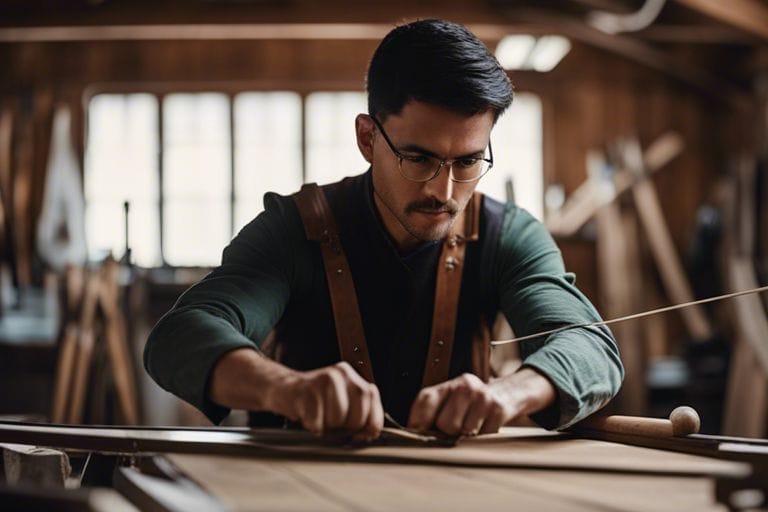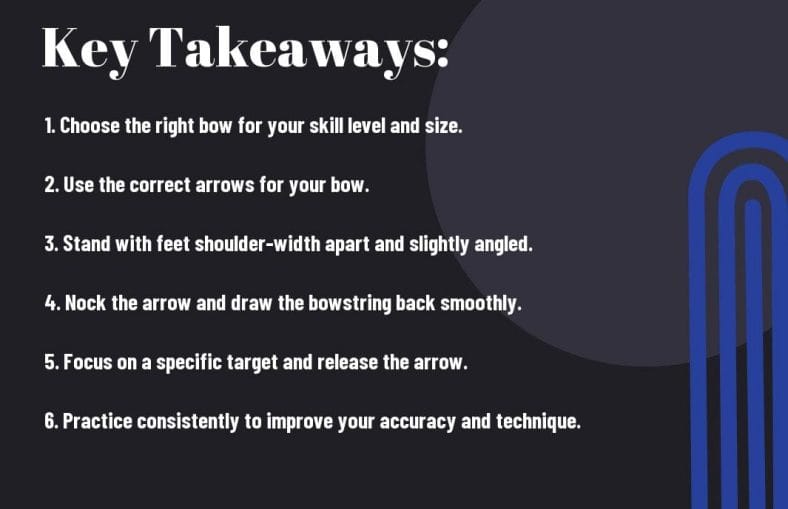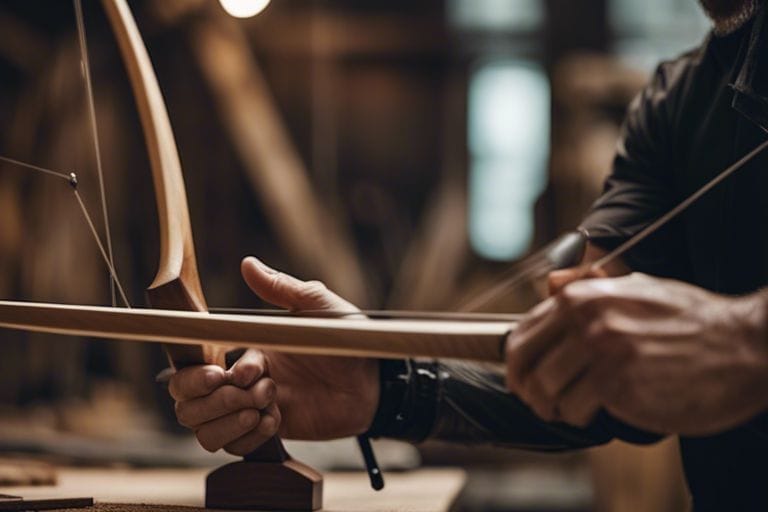Salutations, aspiring archer! Have you ever wanted to try your hand at crafting your very own bow for archery? Well, look no further, because in this informative blog post, I will guide you through the step-by-step process of making a bow archery. From selecting the right materials to shaping the bow to fit your unique needs, you will learn all the essential skills and techniques needed to create a custom bow that is both functional and aesthetically pleasing. Whether you are a beginner or an experienced archer, this blog post will provide you with the knowledge and confidence to embark on this rewarding and fulfilling endeavor. So, let’s dive in and get started on making your very own bow archery!
Key Takeaways:
- Choose the right materials: Select a strong, flexible wood such as yew, hickory, or lemonwood for the bow’s stave. Use a strong, durable material like Dacron or Fast Flight for the bowstring.
- Follow the proper technique: Use a bowstringer to securely string the bow, and ensure the string sits properly in the grooves of the bow. Use a tillering tree to carefully adjust the bend of the bow limbs for optimal performance.
- Practice precision and safety: Always inspect your bow for any signs of damage or wear before each use. Properly nock the arrow and ensure a smooth, controlled release to maintain accuracy and prevent injury.

Bow Materials and Tools
Assuming you have decided to try your hand at making your own bow, the first step is to gather the necessary materials and tools. Choosing the right materials and having the appropriate tools is crucial in creating a reliable and effective bow. In this chapter, we will discuss the different materials you can use for making a bow and the essential tools you will need for the process.
Selecting the Right Wood
When it comes to selecting the right wood for making a bow, you need to consider a few key factors. The wood should have the right balance of strength, flexibility, and density to withstand the stress of being drawn and released repeatedly. Commonly used woods for making bows include yew, hickory, and osage orange. You want to choose a wood that is free from knots, twists, and other defects that could compromise the structural integrity of the bow. It’s essential to select a piece of wood that is straight-grained and has a uniform density to ensure optimal performance.
Essential Tools for Bow Making
When it comes to making a bow, having the right tools is essential for achieving the desired results. Some of the essential tools you will need include a sharp knife or drawknife for shaping the wood, a rasp or file for refining the shape, a tillering stick for testing the bend of the bow, and a string for testing the draw weight. Additionally, you will require sandpaper for smoothing the edges and a scraper for removing excess wood. Having the right tools and knowing how to use them properly is crucial for creating a functional and reliable bow.
Designing Your Bow
Some of the most important factors to consider when designing your bow are its shape, size, and materials. By carefully considering these elements, you can create a bow that is not only functional but also suited to your personal preferences and needs.
Determining Bow Shape and Size
When determining the shape and size of your bow, consider factors such as your draw length, shooting style, and intended use. For example, if you have a longer draw length, you may want to opt for a bow with a longer overall length to accommodate for this. Similarly, if you plan to use your bow for hunting, you may want to choose a design that offers greater power and speed.
Measuring and Cutting Your Stave
Before you can begin shaping your bow, you will need to measure and cut your stave to the desired length. This process requires precision to ensure that your bow will have the correct draw weight and flexibility. Once you have your stave, you can begin marking out the dimensions for your bow and carefully cut it to size using a saw or other appropriate tools.

Shaping and Crafting the Bow
After gathering the necessary materials and tools, the next step in making a bow for archery is shaping and crafting the bow itself. You can find detailed instructions on how to make a bow and arrow at How to Make a Bow and Arrow.
Rough Shaping the Stave
When rough shaping the stave, you will need to carefully remove excess material from the bow using a draw knife, spoke shave, or other suitable tools. You will also need to apply heat to the wood in order to bend it into the desired shape. This process requires patience and a steady hand, as it is crucial to achieve the proper balance and tension in the bow.
Refining the Bow and String Notches
After rough shaping the stave, the next step is to refine the shape of the bow and create the string notches. This involves carefully smoothing out any rough edges and shaping the limbs to ensure they are uniform and symmetrical. The string notches must also be carefully carved into the wood to ensure they are the correct size and shape to securely hold the bowstring in place.
Finishing Touches
Now that you have completed the major steps of constructing your bow, it’s time to add the finishing touches that will ensure your bow looks and performs at its best.
Sanding and Finishing the Surface
Your bow’s surface needs to be smooth and free of imperfections to ensure optimal performance. Start by sanding the entire surface of the bow with fine-grit sandpaper, working in the direction of the grain to avoid scratching the wood. Once the surface is smooth, you can apply a finish such as varnish or linseed oil to protect the wood and enhance its appearance. Be sure to follow the manufacturer’s instructions for the finish you choose, and allow sufficient drying time before moving on to the next step.
Stringing and Testing Your Bow
Stringing your bow properly is crucial for its safety and performance. Use a bow stringer to safely string your bow, following the manufacturer’s instructions. Once your bow is strung, it’s time to test its draw weight and make any necessary adjustments. Use a bow scale to measure the draw weight at your desired draw length, and make sure it falls within the safe range for your bow. If adjustments are needed, consult a professional or experienced archer for guidance.
Maintenance and Care
Despite its simple design, a bow requires regular maintenance and care to ensure optimal performance and longevity. By taking the time to properly care for your bow, you can avoid unnecessary wear and tear, prolong its lifespan, and ultimately improve your archery experience.
Bow Storage and Handling
When it comes to storing your bow, it’s important to keep it in a cool, dry place to prevent warping or damage. Avoid leaving your bow in direct sunlight or extreme temperatures, as this can cause the wood to become brittle and the limbs to warp. Additionally, be mindful of how you handle your bow – always support it by the grip when picking it up or setting it down, and never place it on the ground or lean it against a hard surface as this can cause damage to the limbs or string.
Regular Maintenance Checks
Regularly inspecting your bow for any signs of wear or damage is crucial for its upkeep. Check the string for fraying, the limbs for any cracks or splintering, and the grip for any signs of shifting or loosening. Additionally, ensure that the limb bolts are tightened to the manufacturer’s specifications and that the bow is properly strung. By performing these checks before and after each use, you can catch any potential issues early on and prevent further damage to your bow.

Conclusion
On the whole, learning how to make a bow for archery can be a rewarding and fulfilling experience. By following the steps and techniques outlined in this guide, you can create a reliable and functional bow that suits your individual needs and preferences. Remember to carefully select your materials, measure precisely, and take your time during the construction process. With dedication and practice, you’ll soon be able to craft bows with confidence and skill. Additionally, don’t be afraid to experiment and make adjustments as you become more experienced in bow making. Keep refining your craft and enjoy the satisfaction of shooting with a bow that you’ve made with your own hands.
FAQ
Q: What are the key components of a bow in archery?
A: In archery, the primary components of a bow include the riser, limbs, string, and arrow rest. The riser is the central part of the bow where the archer holds onto, while the limbs are the upper and lower parts of the bow that bend when drawn. The string is essential for releasing the arrow, and the arrow rest supports the arrow before and during the shot.
Q: How do I properly string a bow for archery?
A: To properly string a bow for archery, start by placing one end of the bowstring onto the upper limb tip. Then, step on the bow’s lower limb and use the strength of your legs to bend the bow, allowing you to slide the other end of the string onto the lower limb tip. Make sure the string is securely in place and centered on the bow before releasing the tension and checking that the string is properly seated in the grooves of the limb tips.
Q: What are some basic tips for improving my archery bow technique?
A: To improve your archery bow technique, focus on maintaining a consistent anchor point, drawing the bowstring with the same amount of force each time, and releasing the arrow smoothly without jerking the bow. Additionally, practice proper breathing and focus on your target while aiming. It’s also important to stay relaxed and avoid tensing up, as this can negatively impact your accuracy and consistency.


